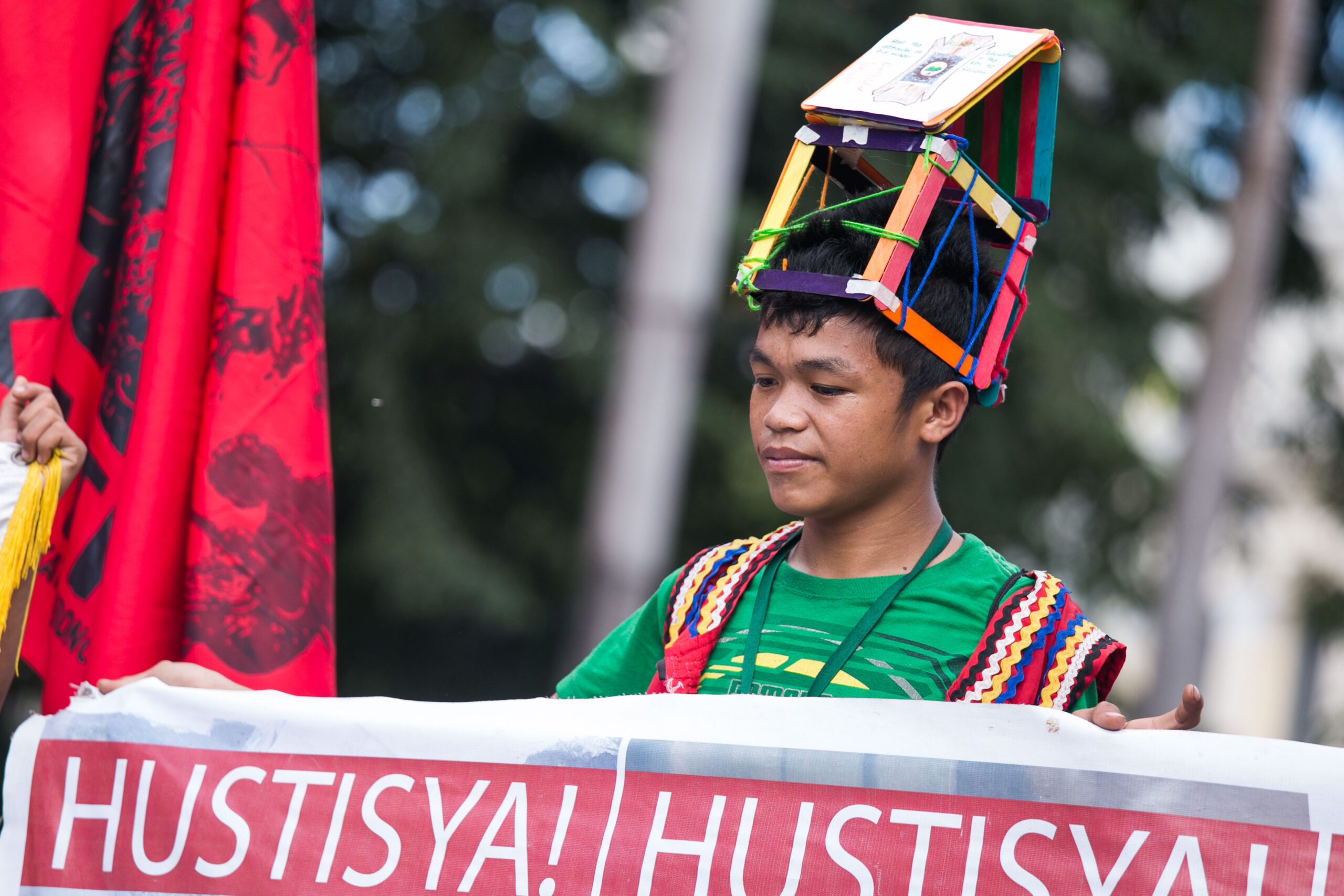SUMMARY
This is AI generated summarization, which may have errors. For context, always refer to the full article.

Covering the Lumad’s plight for the past two weeks has been a daunting task to say the least. The complexity of their situation and its deep political and historical roots made it difficult to fully capture their story.
Even while on the way to cover “Walk with the Lumad,” the task of getting the issues right weighed heavily.
However, arriving at the camp and finally meeting the people reminded me that – when we remove the needless politicking and deceiving propaganda – there are people behind the reports who have had to live through these events.
Talking to the Lumad
Seeing the Lumad camped out at Liwasang Bonifacio, it became clear that their experiences had been taking their toll. (READ: TIMELINE: Attacks on the Lumad of Mindanao)
For example, Maricris Pagaran of the Alternative Learning Center for Agricultural and Livelihood Development (ALCADEV) related the recent torching of an ALCADEV satellite school and the fear residents felt despite living a kilometer away from the incident.
Before talking to Pagaran, members of the Lumad community told me she was feeling unwell because of the stress and fatigue caused by the protests. While speaking with her, however, her exhaustion extended beyond the demonstrations – she was tired of the violence whose increasing numbers and intensity have become a part of day-to-day life.
As with many disasters, children had not been spared. Aside from the closure of their schools, they have also had to cope with forceful removal. Today, they form a large part of the bakwit (evacuees) who have had to leave their land because of the militarization of the area. (READ: Voice of a Lumad widow: Our land, our blood)
During the Manilakbayan protests, Kharlo Manano of SALINLAHI, a group advocating for the safety of Lumad schools, reported that the were children feeling dejected and angry during their day of games at Luneta.
“They are still sad na hindi sila makabalik sa kanilang komunidad at habang hindi nila ito makamtan, makakaramdam sila ng lungkot,” (They are sad that they can’t go back to their community, and as long as they can’t, they will feel sadness) Manano said.
These are the stories that are frequently forgotten in favor of the politics surrounding it. Military officials said they were tasked to protect the communities from the New People’s Army, but the deployment of military and paramilitary forces in the area were seen as troops supporting the mining and logging operations threatening the Lumad’s ancestral land.
Hidden away
Adding to their suffering is a lack of action on their cases, which they say shows that they simply are not a priority for the government.
The United Nations rapporteurs, Victoria Tauli-Corpuz and Michael Forst, called the Lumad’s situation “deplorable” and the UN delegation in the country began an investigation on the matter; and although the Aquino administration expressed their support for the probe, there has been little progress.
During my time covering their protests, I asked members of the Lumad and their advocates if any steps have been taken to get the government moving. With voices laced with weariness that came from frequent disappointment, they answered, “We have, but the government has done nothing.”
Instead, they told me, they had been brushed under the rug and more so during the APEC week. Kerlan Fanagel, a Lumad spokesperson, said they were being treated like “trash” that had to be hidden away for the visitors.
It is no wonder then that Jomorito Goaynon, another Lumad spokesperson, said he was not hopeful that their problems would be resolved in the near future.
A lack of empathy
Rather than just being a political case, the Lumad’s story is essentially a human one and the response to this should be to feel some degree of empathy. However, in what is perhaps a greater tragedy, many have labelled the Lumad as rabble-rousers and some even claim that their situation is the result of a “tribal war.”
It is frustrating and dispiriting to read or hear these comments because it betrays a lack of unity in feeling for our fellow Filipinos. The Lumad’s case seems to be one of many wherein we have become our own worst enemies by turning our backs on the country’s marginalized communities.
Maybe this is because many have not had the opportunity to hear the Lumad’s accounts firsthand. News reports and social media are rarely ever enough to get a full understanding of the human aspect of the issue.
This is why I hope to reach those who still think the Lumad’s suffering is merely for show or a tool to incite an armed struggle: I am inviting you to walk with the Lumad to see and hear their stories, because their pain is a real and human one, and they deserve your empathy and action. – Rappler.com
Bea Orante is a writer at MovePH, Rappler’s civic engagement arm.
Add a comment
How does this make you feel?
There are no comments yet. Add your comment to start the conversation.